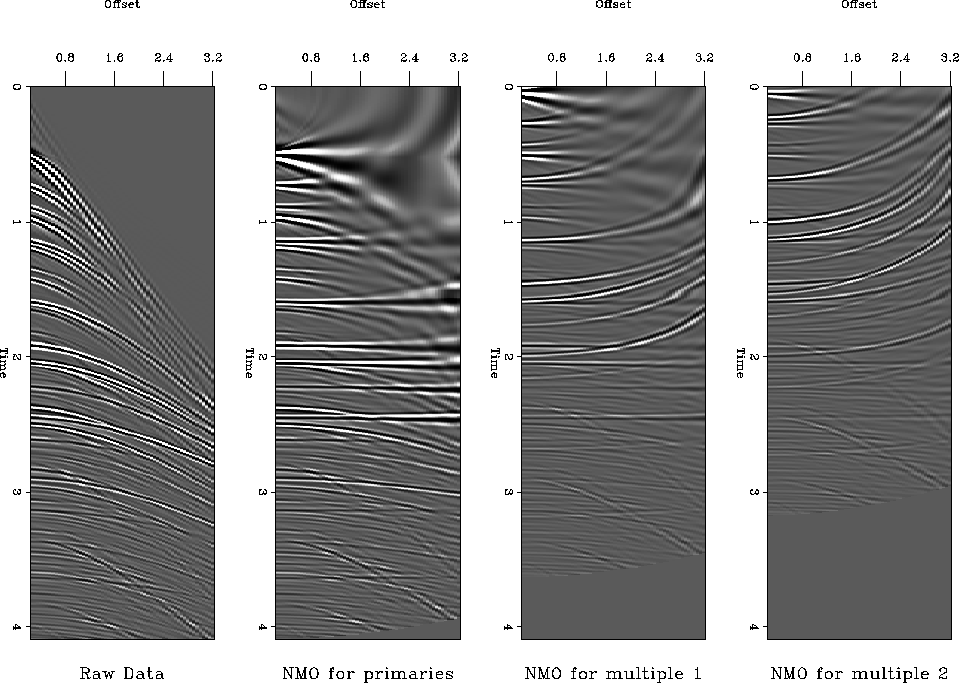




Next: Regularization of the Least-Squares
Up: methodology
Previous: Least-squares imaging of multiples
Figure 3 shows the result of applying the adjoint of equation
(6) to a synthetic CMP gather which was constructed by an elastic modeling
scheme. Imagine for a moment that the CMP gather consists only of primaries and
first- and second-order water-bottom multiples. The ``NMO for Primaries'' panel would
contain flattened primaries (signal) and downward-curving first- and second-order
multiples (noise). Likewise, the ``NMO for multiple 1'' and ``NMO for multiple 2''
panels contain flattened signal and curving noise. Why do I call these
components ``signal'' and ``noise''? If each of the three panels contained all signal and
no noise, then we could 1) perfectly reconstruct the data from the model by applying
equation (6), and 2) be in the enviable position of having a perfect
estimate of the primaries.
schem.hask
Figure 3 From left to right: Raw synthetic CMP gather;
Conventional NMO applied to data; NMO for first-order water-bottom multiple; NMO for
second-order water-bottom multiples.





Unfortunately, the curved events - so-called ``crosstalk'' - in all three model panels
spoil this idealized situation Claerbout (1992). Because the crosstalk events
map back to actual events in the data, they are difficult to suppress in a least-squares
minimization of the data residual [equation (7)]. Nemeth et al. (1999)
shows that crosstalk relates directly to non-invertibility of the Hessian ( ),
and that data-space or model-space regularization may partially overcome the difficulty.
In the following section, I introduce a novel form of model-space regularization which
promotes discrimination of signal from crosstalk.
),
and that data-space or model-space regularization may partially overcome the difficulty.
In the following section, I introduce a novel form of model-space regularization which
promotes discrimination of signal from crosstalk.





Next: Regularization of the Least-Squares
Up: methodology
Previous: Least-squares imaging of multiples
Stanford Exploration Project
6/10/2002


![]() ),
and that data-space or model-space regularization may partially overcome the difficulty.
In the following section, I introduce a novel form of model-space regularization which
promotes discrimination of signal from crosstalk.
),
and that data-space or model-space regularization may partially overcome the difficulty.
In the following section, I introduce a novel form of model-space regularization which
promotes discrimination of signal from crosstalk.